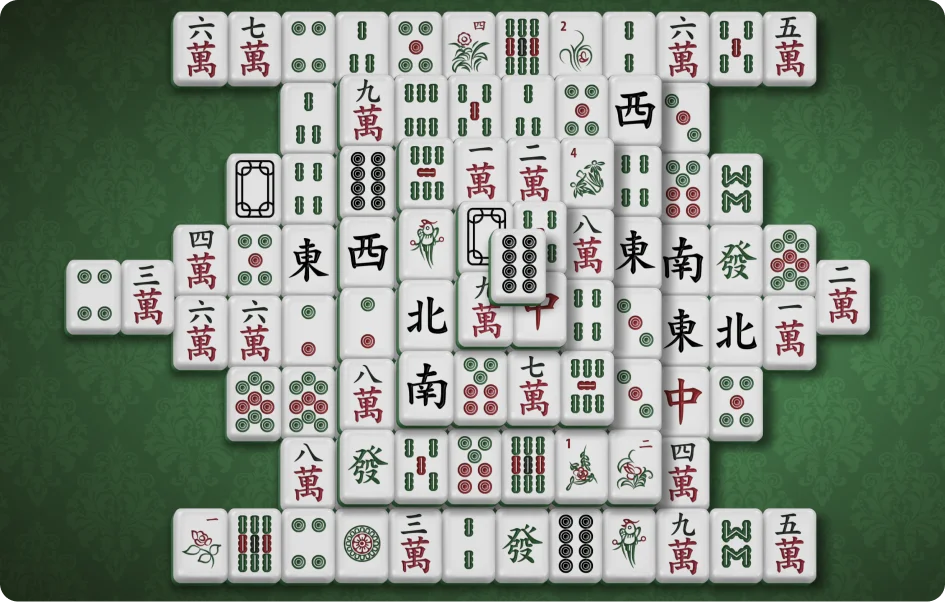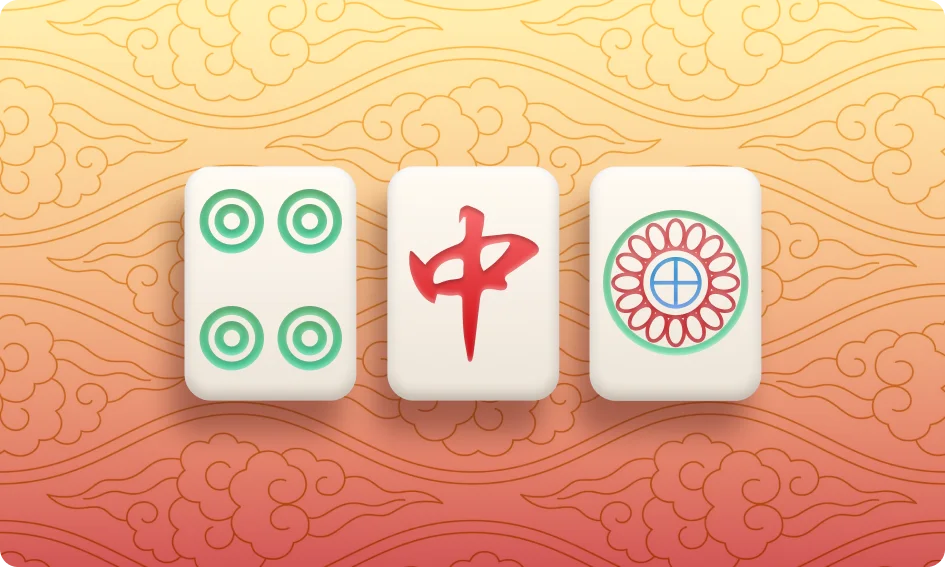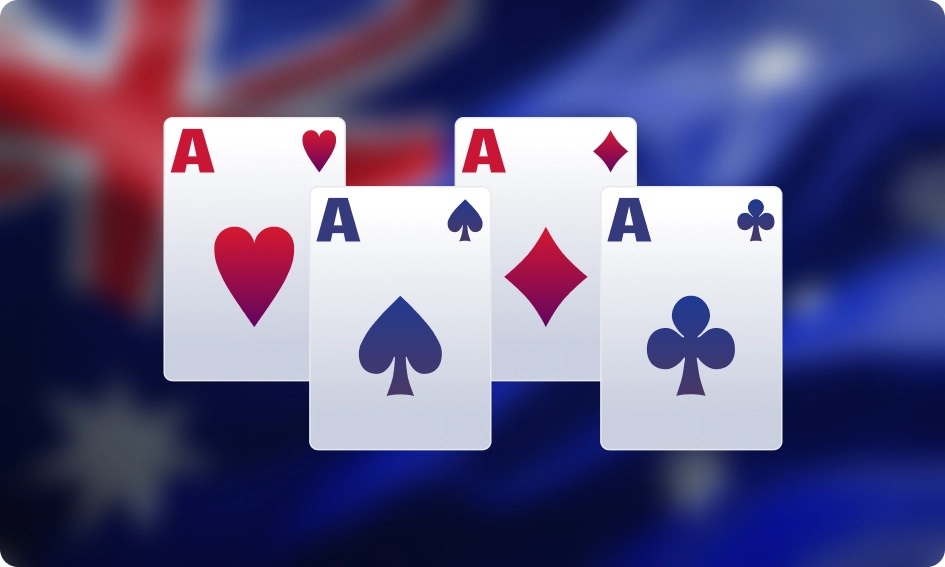If you’ve ever watched a Chinese gambling movie, then you might have noticed the characters playing a peculiar game – a game that features small tiles adorned with intricate designs. This game is called Mahjong, and it has a rich history dating back to China’s 19th-century Qing Dynasty.
As the world became increasingly interconnected, Mahjong found its way to America. There, it quickly captured board game enthusiasts’ attention. In 1981, a computer programmer named Brodie Lockard immortalized Mahjong in the world of computerized Solitaire by designing the variant we call Mahjong Solitaire. Although it bears its multiplayer predecessor’s name, Mahjong Solitaire is a unique one-player game.
Mahjong Solitaire stands out because it doesn’t use the traditional 52-card deck. Instead, one plays it with a set of beautifully designed tiles (which can be daunting for newcomers). This exotic feature is, however, why the game initially caught my eye. From that point on, I was hooked. I could not rest until I had mastered this Solitaire variant.
In this blog, I will impart what I’ve learned to all you Solitaire enthusiasts wishing to add Mahjong to your repertoire. By the end, you’ll have the knowledge you need to get started.
How to Play Mahjong Solitaire

Seeing all the tiles laid down in an unsymmetric pattern often has Mahjong Solitaire newbies scratching their heads. The learning curve for this game is steep. You’ll have to put in some time and effort to get a good grasp of the game. But, the learning process can be fun and ultimately satisfying. Let’s have a look at how the game is set up.
Game Setup
- The game makes use of 144 tiles, which can be divided into four categories:
- Suited tiles are similar to the suits in a deck of cards. There are three suits in Mahjong Solitaire (Circle, Bamboo, and Character). Each suit has tiles numbered from one to nine, and there are four tiles for each number. This gives us a total of 108 suited tiles.
- Honor tiles don’t belong to any suit. However, they’re divided into Wind and Dragon tiles. The Wind tiles represent the four directions (North, South, East, and West), while the Dragon tiles usually come in three types (Red, Green, and White).
- Bonus tiles consist of Flower and Season tiles. These don’t belong to any suit and can be paired with any other tile.
- There are also Jokers in some versions of the game (like the American variant). These tiles can be thought of as wildcards, meaning that they can represent any tile in the game.
- You carefully arrange all 144 tiles in a specific pattern, one that resembles a five-layered pyramid. Setting up the layout is a tedious task, so most people play online versions. Now, the computer performs the setup for you (you also don’t have to buy the tiles). Here are a few commonly used layouts:
- The Spider layout is the classic version. As you might have guessed, the layout resembles a spider. Four legs extend out from the corners of the pyramid, providing a balanced layout.
- The Pyramid layout naturally has the tiles arranged in the shape of a pyramid. This version is more challenging than the Spider variant because it’s trickier to find matching pairs.
- The Square is the most simple layout, and it, of course, involves arranging the tiles into a square shape. This is a great option for beginners who are still learning the ropes.
Regardless of which layout you end up choosing, the rules remain the same. Here’s a quick, yet comprehensive, overview.
Game Rules
- Your objective in Mahjong Solitaire is to clear all the tiles from the board before the timer runs out or before you exhaust all possible matches.
- To remove tiles from the board, you need to find and select two matching tiles – tiles that are identical and open.
- A tile is ‘open’ if it doesn’t have any other tiles on top of it or on its left or right.
Believe it or not, that’s it! That’s all there is to this outwardly intimidating game. But, don’t be fooled by the simple rules. Keeping an eye on 144 tiles for the most optimal matches is not an easy feat. It requires lots of practice to master the art. It took me a few months of non-stop play before I could confidently make suitable matches and consistently win the game. Luckily, you won’t have to spend this much time figuring out the best strategy because I have listed some tips and tricks. These will give you a headstart.
Winning at Mahjong Solitaire
Despite being a timed game, Mahjong Solitaire demands patience and relaxation. If you rush to make matches, then you will surely ruin the game. Although practice is often the best teacher, be sure to keep the following strategies in mind next time you line up those tiles:
| Strategy | Detail |
| Monitor open matches. | Use a notebook to keep track of how many open matches remain. Aim to keep this number as high as possible throughout the game. |
| Be cautious when matching tiles. | When choosing tiles to match, prioritize those that will unblock the most tiles once they’re cleared. |
| Clear top and corner tiles first. | Clearing a match on the top will unblock the tiles underneath it. Clearing matching corner tiles will allow you to match the horizontal tile rows, which are often difficult to remove. |
| Use hints wisely. | Many online Mahjong Solitaire games have a hint feature. Feel free to use it when stuck. But, remember that the computer might not always suggest the best matches and can even cause you to lose the game. |
| Patience is key. | Don’t rush into making matches. Sometimes, the best strategy is to wait. Doing so can open up better opportunities later in the game. |
Are There Any Other Mahjong Solitaire Variants?
You might be wondering if the legendary game of Mahjong has inspired other variants. Indeed, it has. Here are some Mahjong variants you might be interested in:
| Variant | Description |
| American Mahjong | Developed in the early 20th century, this variant introduced Joker cards (or wildcards). |
| Japanese Mahjong | This variant uses 34 different types of tiles and excludes the season tiles found in the original Mahjong. Instead, it uses ‘Richii’ and ‘Dora’, which add an extra layer of strategy to the game. |
| Shisen-Sho | Also known as Mahjong Connect, this Japanese game makes you to pair tiles that connect via a path that only takes two 90-degree angles. |
| Mahjong Flip | In this variant, when you match two tiles, they flip around and must be matched again before they are finally removed from the layout. |
| Triple Mahjong | In this game, you have to match three tiles instead of two. |
Conclusion
The classic Chinese game of Mahjong lives on through Mahjong Solitaire, which attracts thousands of players each year. If you’re looking to have a relaxing, but stimulating, time, then light up some Chinese-scented candles, make some tea, and enjoy a good game of Mahjong Solitaire!






